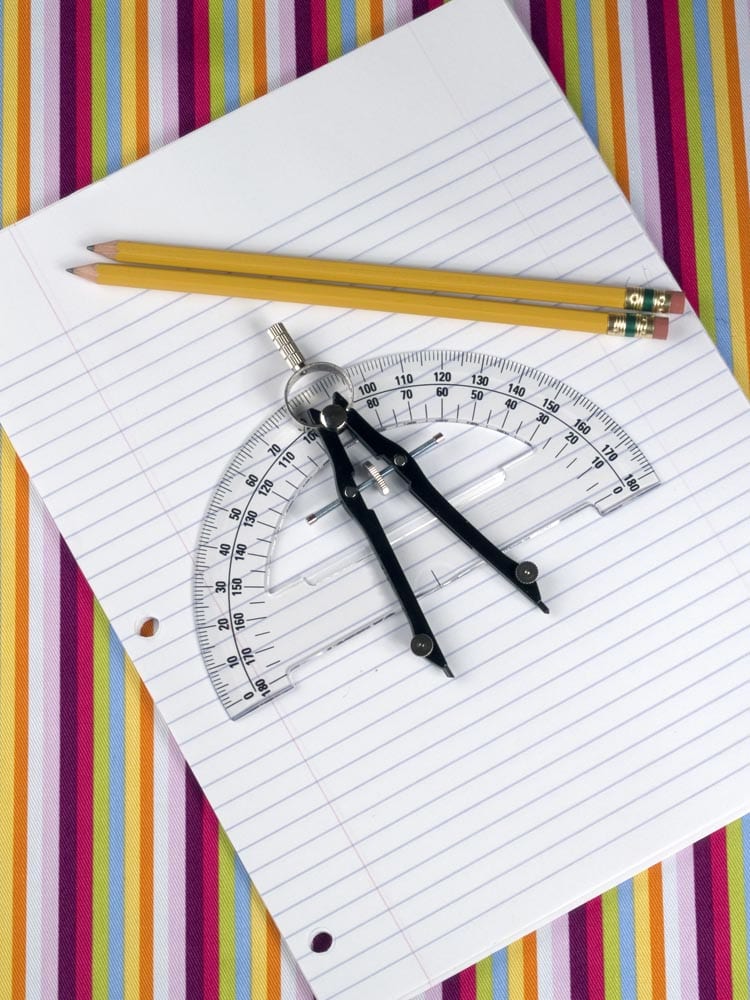Using Protractors in Middle School
 All Classroom Lessons
All Classroom Lessons
A Lesson for Fourth, Fifth, and Sixth Grade
by Marilyn Burns
In Writing in Math Class (Math Solutions Publications, 1995), Marilyn Burns shows how writing helps students actively engage in their thinking about math; how it deepens and extends their understanding; and how it encourages them to examine their ideas and reflect on what they have learned. Also, student writing helps teachers assess their learning. In the following excerpt, she shares how Cathy Humphreys uses writing to help her middle school students learn to use protractors.

From her past experiences teaching middle school students about angles, Cathy Humphreys knew that students often have difficulty learning how to use protractors. Often they don’t see the need for the tool, so Cathy does not introduce protractors until after the students have had concrete experiences measuring angles several ways.
When Cathy distributed protractors to her class in San Jose, California, she told the students, “The protractor is a useful tool for both measuring angles and drawing angles of specific sizes.” She asked the students to work in pairs and explore the protractors.
“It may be helpful to use a right angle as a reference,” she suggested, “since you already know a right angle is ninety degrees.”
After a while, Cathy called the class to attention and asked the students to share what they had noticed. Then Cathy gave them the challenge of figuring out how to use the protractors and writing directions that someone else could follow. She said, “Your directions should tell how to measure angles and also how to draw angles of different sizes. You can include drawings if they will help make your directions clear.”
Before the students began, Cathy wrote protractor and angle on the overhead for their reference and asked them what other words about angles they might use. She listed all the words the students suggested: acute, right, obtuse, straight, degrees.
Students expressed their thinking in different ways. Jenny and Sara, for example, wrote the following directions for measuring an angle: First, you make an angle. Then you place the bottom line of the angle on the line of the protractor. Then you put the dot on the vertex of the angle. Then you find out what degree the angle is. If you can’t figure it out, you do this. First you find out if your angle is obtuse or acute. If it’s obtuse you use the top line, if it’s acute you use the bottom line. Then you get the arrow and take it up to the number and the number that the line hits is the degree of your angle.
Cuong and Cheryl wrote: One rule you must always remember is you must always have the bulls eye on the straight line on the bottom. If the angle goes to the right you must read the bottom numbers. But if it goes to the left you must read the top numbers.
Ron M. and Ron S. wrote: You place the vertex of the angle you are measuring in the middle of the hole. The hole is on the bottom of the protractor. When measuring, let’s say that it is 69 degrees. On the protractor it does not say 69°. Only 50, 60, & 70. What you do is measure and count by the lines on top of the protractor.
Will and Pat designed their work as a pamphlet. They titled it The Protractor Manual (see Figure 1). They wrote: There are 2 things a Protractor does for you. it 1. measures angles and 2. It makes new angles. To measure an angle you put the rough side of the protractor down then put the vertex of the angle in the little hole in the middle, (shown on pages 3 and 4) and if the angle is acute you use the numbers on the bottom on the right but if it is acute but it is pointing to the left you use the left side and the top (shown on pages 3 and 4). To make angles you use the bottom part of the Protractor (shown on pages 3 and 4) to make any angle you disire.

Figure 1.
In Figures 2 and 3, students explained in different ways how to use a protractor.

Figure 2.

Figure 3.
From Online Newsletter Issue Number 4, Winter 2001–2002
Related Publication:
Writing in Math Class: A Resource for Grades 2–8
by Marilyn Burns

Comments